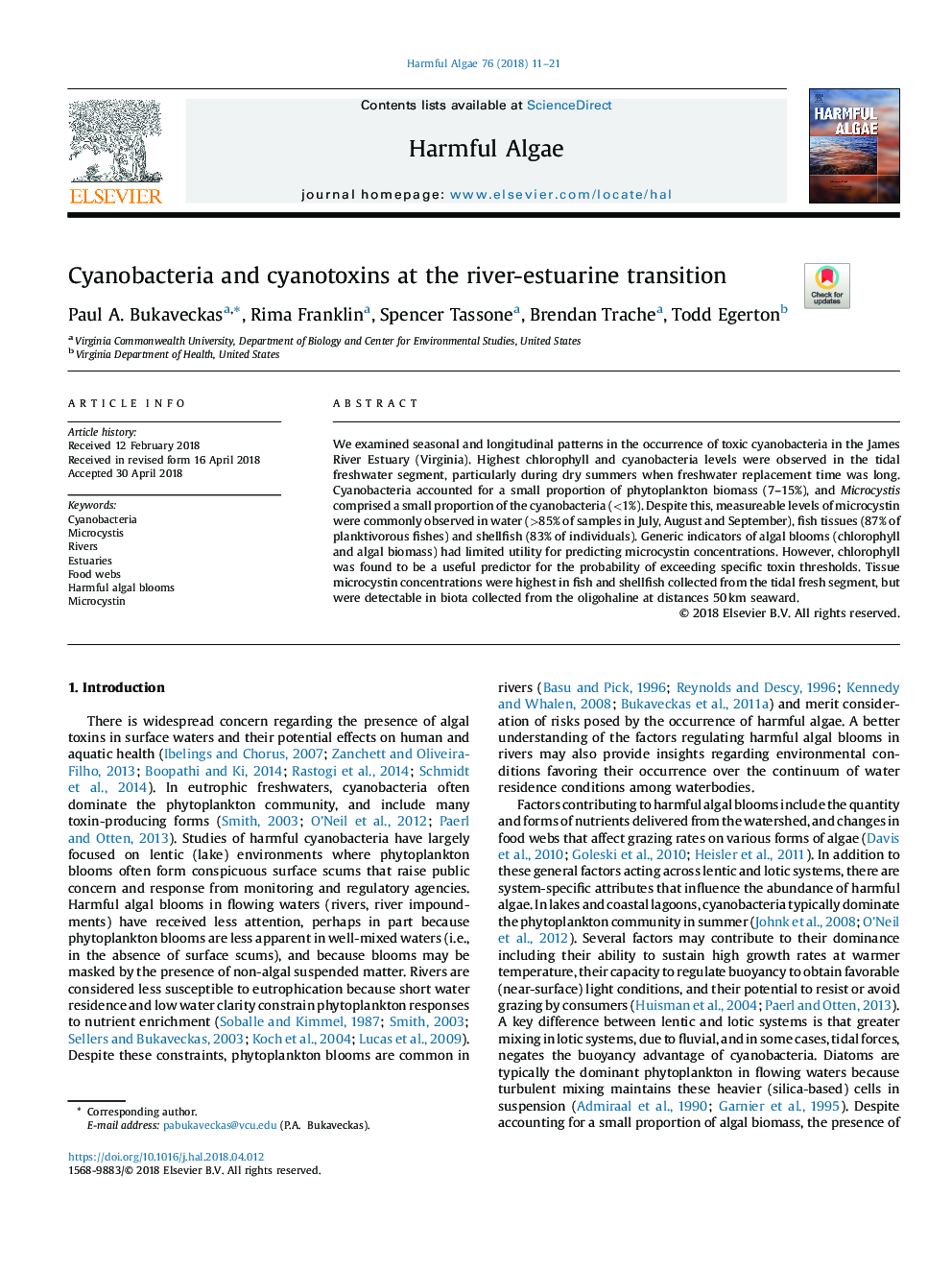| Article ID | Journal | Published Year | Pages | File Type |
|---|---|---|---|---|
| 8885648 | Harmful Algae | 2018 | 11 Pages |
Abstract
We examined seasonal and longitudinal patterns in the occurrence of toxic cyanobacteria in the James River Estuary (Virginia). Highest chlorophyll and cyanobacteria levels were observed in the tidal freshwater segment, particularly during dry summers when freshwater replacement time was long. Cyanobacteria accounted for a small proportion of phytoplankton biomass (7-15%), and Microcystis comprised a small proportion of the cyanobacteria (<1%). Despite this, measureable levels of microcystin were commonly observed in water (>85% of samples in July, August and September), fish tissues (87% of planktivorous fishes) and shellfish (83% of individuals). Generic indicators of algal blooms (chlorophyll and algal biomass) had limited utility for predicting microcystin concentrations. However, chlorophyll was found to be a useful predictor for the probability of exceeding specific toxin thresholds. Tissue microcystin concentrations were highest in fish and shellfish collected from the tidal fresh segment, but were detectable in biota collected from the oligohaline at distances 50â¯km seaward.
Related Topics
Life Sciences
Agricultural and Biological Sciences
Aquatic Science
Authors
Paul A. Bukaveckas, Rima Franklin, Spencer Tassone, Brendan Trache, Todd Egerton,
